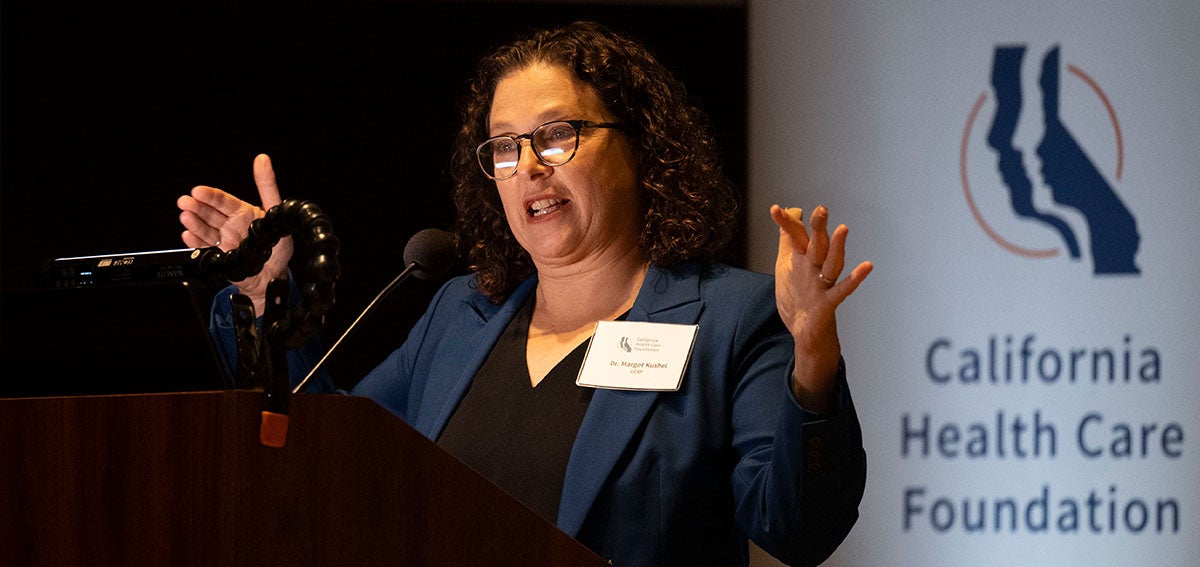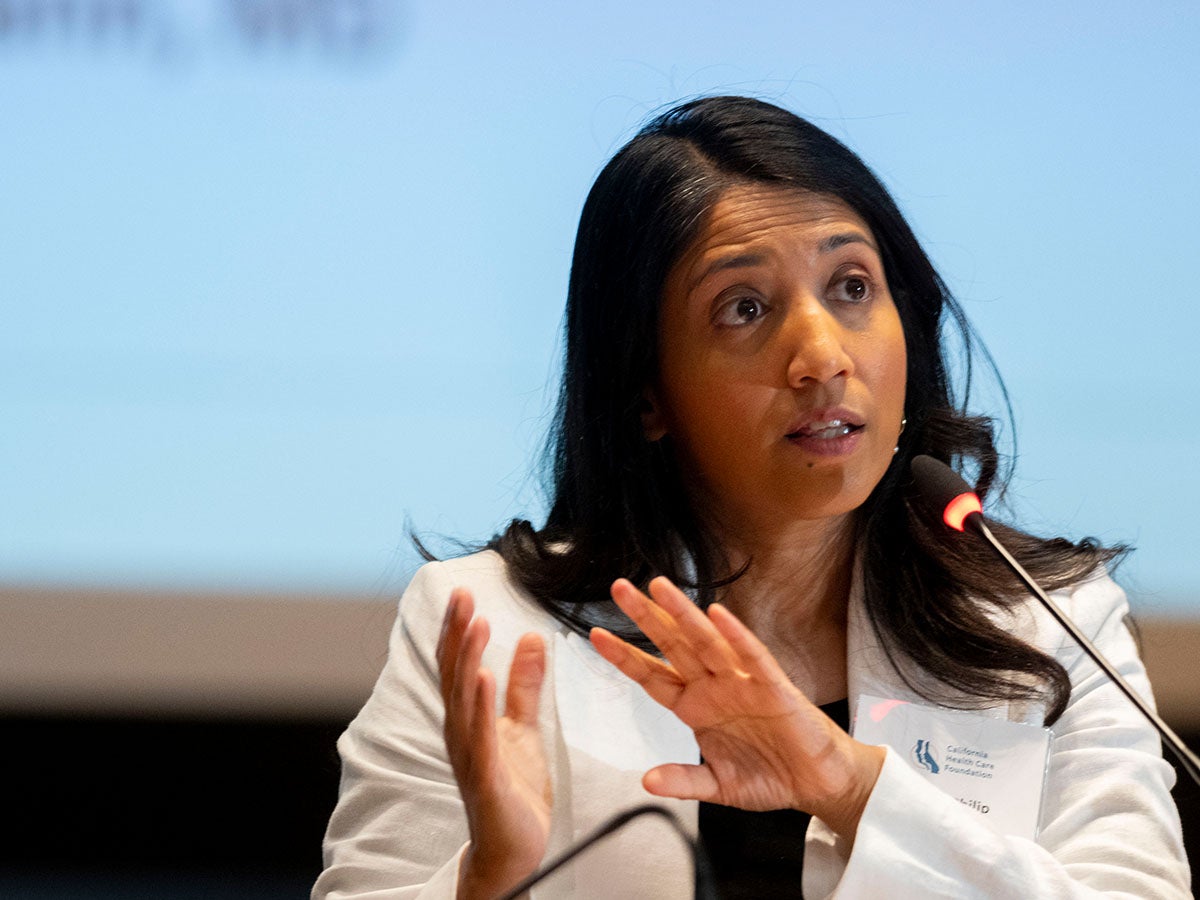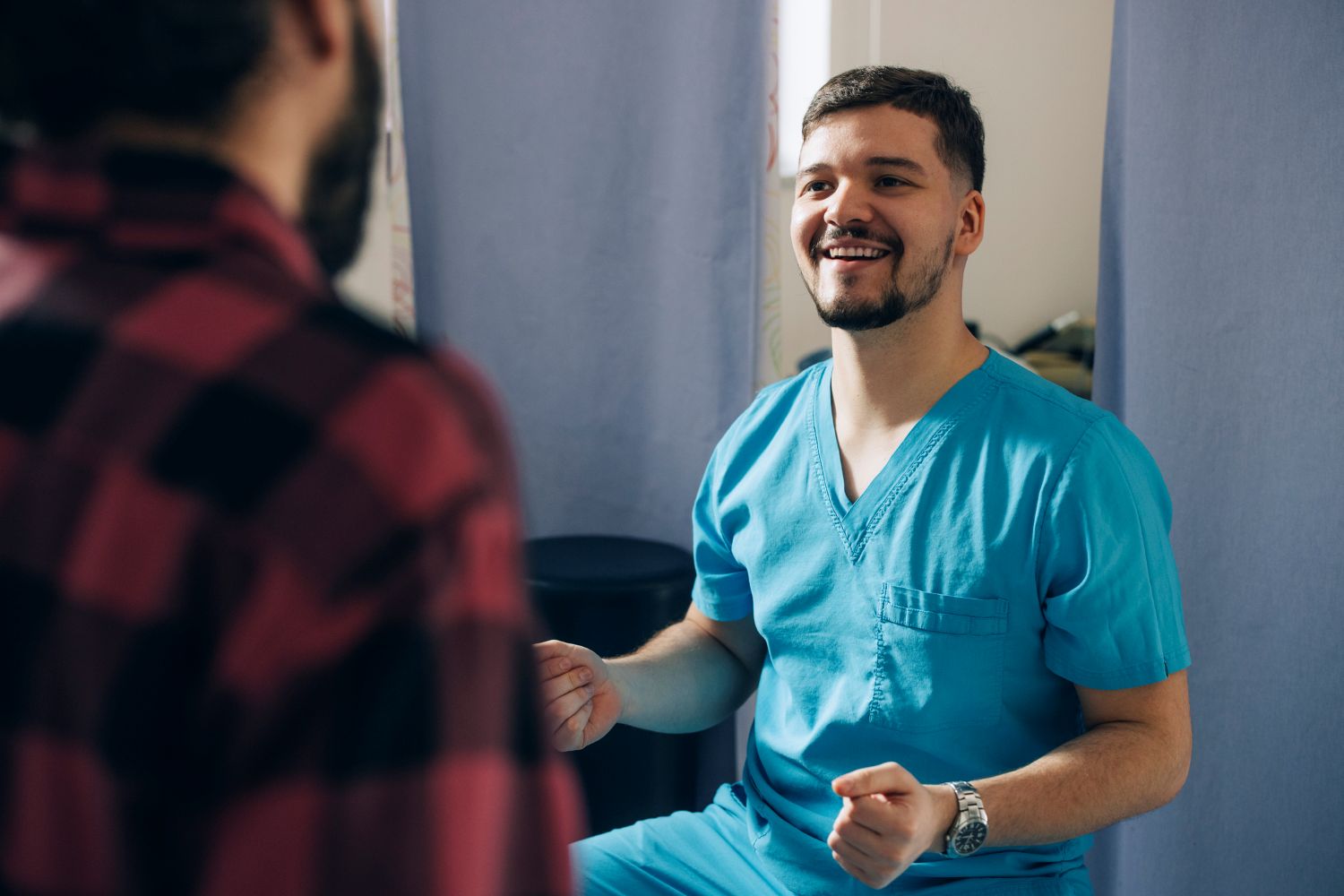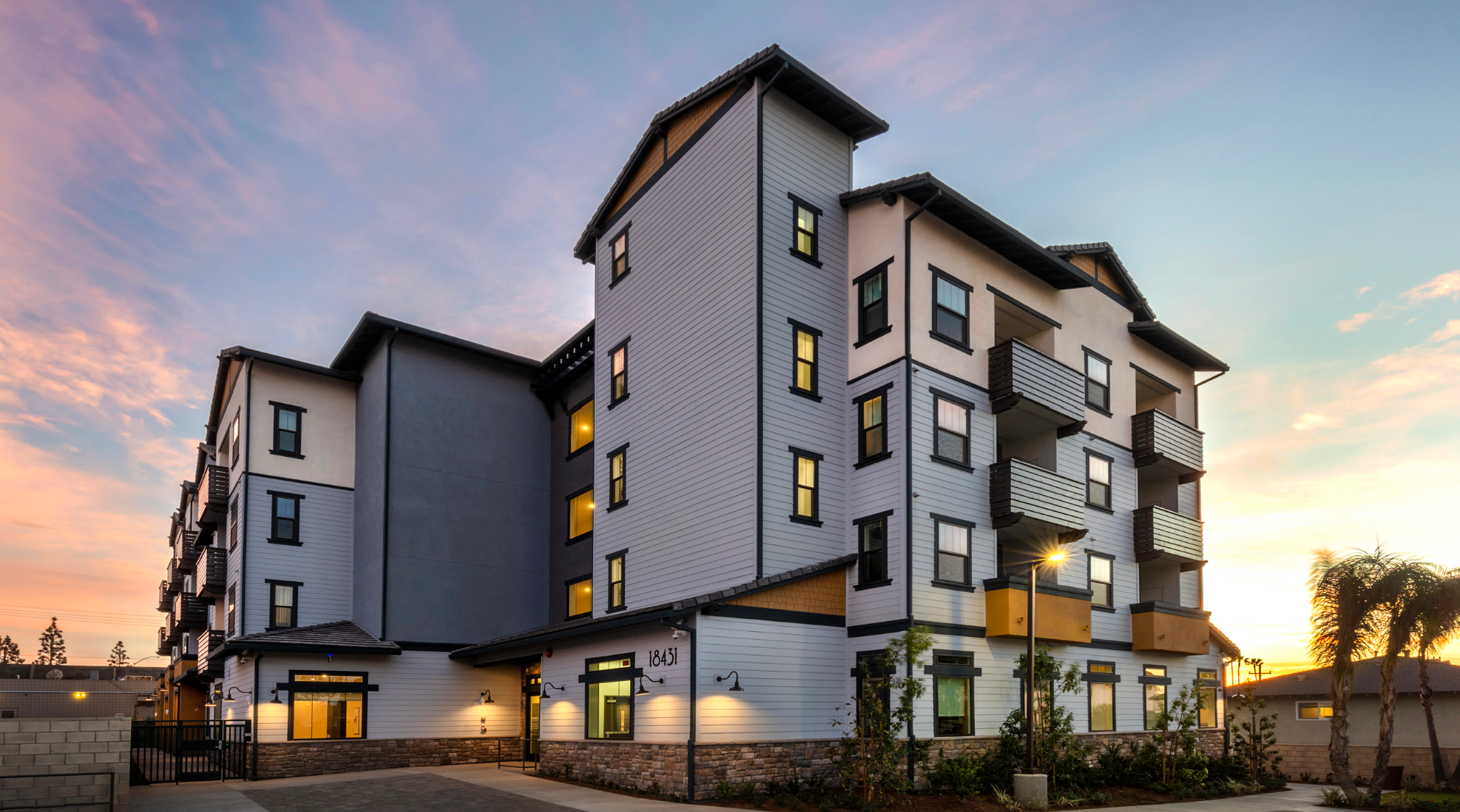|
Getting your Trinity Audio player ready…
|

As a physician, I have witnessed patients struggle with health issues caused or complicated by housing instability. It is terribly distressing to see a patient who could potentially live a healthy life encounter persistent structural obstacles to regaining a safe and reliable place to live.
On March 12, I had the privilege of moderating a CHCF briefing that brought together leaders from California state government and providers of health care and social services to discuss how Medi-Cal’s three housing Community Supports are addressing homelessness. The “housing trio” — housing transition navigation services, housing deposits, and housing tenancy and sustaining services — were developed through Medi-Cal’s CalAIM initiative; they are designed to bring a more integrated and people-centered approach to caring for people with the most complex health and social needs, including those experiencing homelessness.
More than 100 people attended in person at the Department of Health Care Services (DHCS) auditorium in Sacramento, and 650 more watched the live webcast. This strong attendance underscored the urgency and importance of the homelessness problem to our state. You can watch the complete video replay on our website.
The Intersection of Health and Housing
Margot Kushel, MD, director of the Benioff Homelessness and Housing Initiative at UCSF, opened the briefing with insights from the California Statewide Study of People Experiencing Homelessness. She highlighted the ways that homelessness combines with physical and behavioral health problems to create a vicious cycle: Health issues increase the risk of homelessness, and living unhoused worsens health through exposure to trauma, sleep deprivation, environmental hazards, and impeded access to care.
Kushel emphasized that the right interventions at the right time can prevent, mitigate, or end homelessness. While many will eventually resolve their housing situation independently, strategic support can dramatically reduce the duration of homelessness from years to months or even weeks.
Cross-Sector Collaboration Breaks Down Barriers
The heart of the briefing was a panel discussion that started with the elephant in the room: how DHCS is thinking about the future of CalAIM in the face of federal uncertainties.
Susan Philip, MPP, the DHCS deputy director of health care delivery systems, was crystal clear in her response. “As a state, as a department, we are fully committed to Community Supports and the scaling of them. We’re not going to speculate what the federal government might do, but … just to reiterate … we are fully committed. As [DHCS] Director Michelle Baass likes to say, ‘We are pedal to the metal on this.’”
The panel discussion revealed both the challenges and the promising solutions that have emerged through the CalAIM initiative and the housing Community Supports.
Cheryl Winter, MPH, associate director of California state policy at the Corporation for Supportive Housing, highlighted a fundamental challenge: Housing and health care organizations operate in different worlds with different languages, systems, and, crucially, funding mechanisms.
“Homeless and housing service providers are having to enter into a new and very complex system of care, moving from a grant-funded system where you’re receiving funding up front, and you serve as many people as you possibly can, to one where you submit the data and reports and receive payment 30 to 90 days after services are provided,” Winter said. This misalignment creates significant cash flow challenges for community-based organizations (CBOs) trying to provide housing supports.

Philip pointed to the emergence of “flex pools” as a promising strategy.
“These local administrative entities braid together different funding streams to address cash flow problems,” Philip said. “They’re helping housing providers cover immediate costs like deposits and transitional rent that would otherwise be impossible under traditional Medi-Cal reimbursement timelines.”
She added that administrative “hubs” are becoming critical intermediaries between CBOs and Medi-Cal managed care plans. These hubs handle the complex claims and invoicing processes so that each community-based organization doesn’t have to become a Medi-Cal billing expert overnight, she said. “That way, the CBO can focus on the bread and butter of actually serving the Medi-Cal members, and the administrative hub can work with the managed care plans on billing,” Philip said.
The Housing Supply Challenge
Even with these innovations, there simply aren’t enough affordable units available for people with low incomes.
“There are tens of thousands of people now receiving housing transition navigation services through Medi-Cal, which is incredible,” Winter said. “But providers have nowhere to navigate them to. This impacts everyone — the member, the providers, and the plans.”
This reality resonated deeply with me. During my years practicing alongside Kushel at San Francisco General Hospital, we often wished we could write a “prescription for housing.” Today, through CalAIM, we’re closer to that reality. But unless the underlying housing shortage is addressed, our efforts will fall short.
Expanding the Housing Support Toolkit
Philip detailed how DHCS has strengthened its commitment to whole-person care through CalAIM. “We know that housing stability is crucial for health and well-being, directly impacting physical, mental, and behavioral health,” she said.
Beyond the initial trio of housing Community Supports, DHCS now offers these housing supports: recuperative care and short-term post-hospitalization housing. In December, the department began covering six months’ rent for unhoused people with complex health needs or transitioning out of a treatment, detention, or shelter facility.
Setting Ambitious Goals Through Interagency Collaboration
Dhakshike Wickrema, MCP, the deputy secretary of homelessness at the California Business, Consumer Services and Housing Agency (BCSH), shared how the California Interagency Council on Homelessness is coordinating efforts across state departments and agencies.
Its Action Plan for Preventing and Ending Homelessness in California has a goal of increasing the percentage of people experiencing homelessness who move into permanent housing from 18% a year to at least 60% annually over three years.
“That’s an ambitious goal, but it’s the way we want to make sure every state agency and every state department is thinking about how to help people exit unhoused situations to permanent housing situations,” said Wickrema. “Those are places where there’s a sense of stability, a sense of dignity, where people can really take care of their health and be reunited with family and friends if that’s something they want to do, but really use CalAIM and other resources to turn that chapter in their lives.”
This cross-sector approach is showing promising results. According to the statewide Homeless Data Integration System, about 63,000 people moved from homelessness into permanent housing in 2024. Philip noted that a forthcoming RAND/UCLA study will provide more comprehensive data on outcomes for individuals receiving housing Community Supports, including emergency department use and total cost of care.
Audience Questions
From there, we invited audience questions, but unsurprisingly we could not get to all of them in the time remaining. Here are my responses to some additional questions from the Zoom audience that weren’t addressed at the briefing.
Q: In Santa Barbara County, we have many providers of services. What is challenging is that to coordinate care holistically, it’s hard to link efforts. Any suggestions about how to make this work more seamlessly?
A: This is a great question. Effective cross-sector partnerships are the cornerstone of work to improve outcomes for people experiencing homelessness. Coordination and collaboration take planning and care. A two-year, CHCF-funded project focused explicitly on bringing together partners from the health care and homelessness sectors, and it recently concluded. This brief captures lessons from that initiative. Here are a few takeaways:
- Don’t just talk, do something! Come up with a project that would benefit from cross-sector engagement, and don’t let development of a perfect plan keep you from getting started. Our teams found that it’s better to get going, learn from doing, and adapt as needed rather than risk “analysis paralysis.”
- “Boundary crossers,” the people who work in one sector and then move to work in another, play a crucial role in facilitating relationship development and progress between collaborating sectors.
- Engaging people experiencing homelessness and/or those with lived experience of homelessness offers valuable insights that can inform the development of programs that will impact them and their community.
Beyond these insights, communities in California can use resources that are available to support cross-sector collaboration. For example, the Providing Access and Transforming Health (PATH) Technical Assistance Marketplace offers free resources and technical support to help organizations implement Enhanced Care Management and Community Supports.
Q: Each county in California has a different managed care plan assigned, and the individual counties often manage their own version of Medi-Cal. There is no data sharing within the county and plans. Often unhoused folks move from county to county, which poses a problem. How would you advise the plans to support these efforts?
A: Although Medi-Cal is a statewide program, each of California’s 58 counties separately administers the program for most residents who live within that county. When someone moves to a new county and wants their Medi-Cal to continue, they need to ask for an “inter-county transfer.” The transfer process can be especially complicated for people experiencing homelessness.
In that vein, we supported Homebase and the Western Center on Law and Poverty to create a practical guide, Moving with Medi-Cal: Inter-County Transfers.
The Pathway Forward: Integration and Collaboration
A clear consensus emerged from our discussion at this briefing: No single sector can solve homelessness. The health care system brings valuable skills in assessment and individualized care planning. Housing experts understand the complex landscape of affordable housing resources. Government agencies provide crucial funding and policy frameworks.
Only by working together can we create lasting solutions.
The integration of Medi-Cal housing supports was a significant step forward in California’s approach to homelessness, which recognizes that health and housing are inextricably linked. While challenges remain, particularly around housing supply and cross-sector coordination, the innovations give us reason to be hopeful.
As I reflect on the rich discussion at our briefing, I’m reminded that behind every statistic is a person deserving of dignity, health, and a place to call home. By breaking down walls between health care, housing, and social services, we’re building a more compassionate and effective system for Californians experiencing homelessness. The journey ahead is long, but partnerships forming today are laying the groundwork for effective and meaningful change.
Authors & Contributors


José Luis Villegas
Independent photojournalist
José Luis Villegas is a freelance photojournalist based in Sacramento, California, where he does editorial and commercial work. He has coauthored three books on Latino/x baseball. His work appears in the Ken Burns documentary The 10th Inning and in the ¡Pleibol! exhibition that debuted at the Smithsonian Institution’s National Museum of American History and has been appearing at museums around the country.
Villegas’s work has been exhibited at the Museum of Fine Arts-Houston; the Baseball Hall of Fame in Cooperstown, New York; and at the Oakland Museum of California. Villegas also works as a medical photographer at Shriners Hospital in Sacramento.





